Travel Resources and Travel Tips
Financial planning, booking budget flights, visa tips, finding an affordable accommodation, packing lists, how to plan for long-term travel, eating safely and locally, and tips on local transport – travel resources and tips collected from years of long-term travel.
In 2016, when I quit my job and started traveling almost full-time, I didn’t know how to find the perfect backpack. I had an American Tourister backpack that had cost me about 3000 INR but was baggy, heavy, and uncomfortable on my back. Little did I know that the internet has tonnes of information on travel resources, specifically on finding a good backpack for yourself.
Now fast forward four years (you can even say eight years for I have been traveling around the world on short trips since quite some time), I know a thing or two about finding cheap flights, booking budget-friendly accommodations, discovering reliable travel guides, packing, finding a perfect backpack, getting travel insurance, visas, local transport options, what to read before you travel, and locating good food.
Do read the mistakes I made as a novice traveler and backpacking tips collected from over the years.
Do I always make long lists of the stuff I need to pack, things to do before I travel, or places to see while I am on a trip?
No.
I do a set of things that help me materialize a vague travel idea into a fun trip, mostly long and solo. Only because I had sorted my finances, I could travel for as long as nine-months in South America (my longest solo trip). At times I have returned to India or to Bangalore even after a few weeks for it was time to go back.
Let me tell you the things that need to be done before one embarks on an adventure. If you are smart, unlike me, you should consider spending time preparing at least some of these aspects of your travel so that you can relax on your trip and avoid any unnecessary surprises (or shocks).
I have written down this guide keeping in mind both the long-term and short-term travelers. The idea is to travel comfortably but in a budget, stay at good places, eat local food, have the basic items you would need on your trip, and do the travel without any last-minute hassles.
I have special travel tips for women traveling solo, around the world and in India.
Those who love reading, which I am thinking are most of you — you have a special bonus at the end as I have books and other reading recommendations for you all.
Let’s start.
Financial Planning
When I traveled to Chile, I knew I wouldn’t be returning back to India soon.
Here is what I did, and still do, when I leave on long trips.
1. Check your bank balance
Estimate a budget for your travel. How much can you afford to spend on this trip?
2. Decide a country or city or a forest as per your budget
This might not be applicable to those people who have a clear idea of where they want to go. But I know that my blog is read by many people who have just started traveling and are looking for some travel inspiration and help on how to get started.
For those of you who are new to traveling, I would like to advise that you choose a destination that comfortably fits in your budget without having to stretch. Spend only as much as you can. The world is beautiful, and everything has to be seen.
I went to Indonesia and Malaysia last year for I had just started my blogging journey and wanted to stay within my budget. As I earn more and get established in the writing industry, I wouldn’t think too much before spending on traveling.
3. Sort out your finances
I am sure you all are at different stages of your life. I make sure to clear off and finish any pending tasks related to finances. Life insurances, premium payments, policy withdrawal, bank transfers, provident funds — I go through the list of my investments or debts or policies and see if I need to do anything.
I even give the power of attorney to my family members if something needs to be done while I am away.
Not having a functional phone number of your home country and having a bank issue or an urgent financial task is a redundant but painful situation that you can avoid.
4. Tell your banks you are going on an international trip (if you are)
This might not be true for all of you. But I have heard my international friends complaint about how their bank account was locked for the bank was suspicious of an international withdrawal. Thanks to the bank for the vigilance, but sometimes I have been out of cash in a strange city just because my bank decided to lock me out.
Call and ask your bank about the international withdrawal charges and swipe charges on debit and credit cards. Also, enquire about the international withdrawal limit for a day.
I had to pay for my Colca canyon tour, and I couldn’t withdraw money from my Citi bank. I had HDFC to save me, but I had to call Citi on an international number just so they can increase my daily international withdrawal limit.
Most banks charge an international withdrawal fee. To keep that fees at its minimum, I withdraw enough money that will keep me going for a week, at least. The fee is generally a fixed amount and not a percentage of the withdrawal amount.
5. Credit Cards
I just applied for a credit card, and I hope to use it on my travels. This way I can collect points and then use them later to get free flights or at least some discounts.
Even though I have had Citi and HDFC credit cards before, I didn’t use them much. I used a credit card once and ended up paying about 10k just because I didn’t pay my credit card bill within a month. I was using a credit card for the first time and didn’t care to read the long list of conditions and late-payment charges.
Don’t be like me. If you are using your credit cards, make sure you pay your credit card bill regularly.
Also, if you travel a lot and don’t have credit cards, think about getting one. It is helpful. Ask the bank for a life-time free credit card. Check for any hidden charges.
I will update this section with my experience of using credit cards as I get more information.
Update February 2024: I have been using a credit card for three years now. In India, apart from some points which convert into meagre cash, I don’t get much benefits on my credit card. No discounts on flights or hotels.
6. Talk to your parents
If you are from India, talking to your parents is an additional task that you have to do before getting out. I would write a separate article on how to lie to your parents to travel (sometimes that’s the only way to travel), but for now, I can tell you that please don’t think you are making the biggest mistake in the world because you like to travel.
I have suffered from guilt for long as my parents were miserable when I went to South America. Instead of getting married, I chose to fly thousands of miles away because I wanted to see the world. As frowned upon as that was, now my parents are getting around the idea of my long travels.
Life is good. You are only traveling, not committing a crime, at least nothing that I know of. Go on. Live. Don’t worry too much.
If you would like more such travel tips and regular updates on my travel journey, subscribe to my free weekly newsletter.
Let’s move onto other forms of objective and subjective travel planning.
- Finding Cheap Flights
- Getting the visa
- Finding a budget-friendly accommodation
- Finding reliable travel guides
- What to pack?
- Travel insurance
- How to find local transport options?
- How to find good food?
Finding Cheap Flights/How to find cheap flights?
Many websites and travel blogs have long articles on finding cheap flights. All these guides favor comparing flight prices on a plethora of websites. Some recommend a particular day for booking flights (Tuesday is said to be cheaper). Others suggest you look for monthly prices rather than for a single travel day.
I hear all of them. But over the years I have realized that even though you might spend hours to find that one website that might give you the cheapest deal, the savings is mostly as low as 100-200 rupees/2 dollars. Of course, this is only true if you already have one reliable website that compares prices and give you a budget flight.
My dependable website is Skyscanner.
Here is what I do that seems like a middle ground between being extravagant (that you don’t check any comparison flights) and wasting too much time.
1. Open Incognito Browser
Open an incognito window. But don’t enter your email or phone number until you are sure about the ticket you want to book. Some online travel resources suggest that incognito doesn’t help. Well, it should for the incognito browser won’t have your cookies or search history. But recently I searched for a flight ticket in incognito, and I received flight promotion emails in my inbox later. Strange? I would write more about this as my investigation solidifies. But for now, I trust the incognito mode.
Control/Command + Shift + N — for new incognito window. Or just right-click on Chrome (or any other browser) and open an incognito window.
Search for your flights.
One of the links would be Skyscanner.
I trust Skyscanner for it has never happened that Skyscanner showed me a flight that turned out to be cheaper on some other website that was not on SkyScanner’s list. Skyscanner always has an exhaustive list.
Having said that, I sometimes do look for flights on the airlines’ website to see if they have an exclusive coupon code or some ongoing discount. Like recently I booked a flight on Flipkart for I had a coupon code for about a thousand rupees. I also check Yatra, Goibibo, Kayak, and Momondo, just so that I don’t miss anything. A quick glance at prices tells me where I am getting the cheapest option. Mostly it is Skyscanner.
As you go on individual booking websites that Skyscanner suggests, most of them add convenience fees. Except for HappyEasyGo. But the convenience fee is not a big amount, unlike some other booking websites such as Yatra.
Look out for coupons. Sales. Bank offers. Credit card miles. Don’t get too greedy and get out fast.
How to find flights on Skyscanner?
In Skyscanner, when you enter the destination, you can also just choose the entire world if you are not sure where you want to go. If you can be flexible, instead of selecting a perfect date, choose a month. You will get the month option right next to the specific date option when you click on depart or return.
Add nearby airports in both the return and from flight to see if there is a cheaper connecting flight. I think this option doesn’t make much sense for Indians. We need visas for so many countries that I have never been able to fully utilize connecting flights.
Sometimes, the flights are cheaper if you book them a few months ago. But at times the tickets are expensive even 2-3 months before the travel date. My return to Bombay from Santiago was insanely expensive even though I had booked the ticket about three months before the travel date.
Thailand, Bali, Kuala Lumpur, Frankfurt, are connecting airports. They have tonnes of incoming and outgoing flights, more like hubs or junctions. So you can fly to them for affordable prices, and then travel further or find another flight to your destination.
A great tip to save money on flights – Sometimes it is better to book two different flights rather than finding a connecting flight. Do check.
Getting the visa
I could have written this section of getting the visa before finding a cheap flight, but as an Indian, I am used to booking flights without a visa in hand. Why?
Because I know that even though I would have to apply for a visa (if the visa is not online or on arrival), I need to book the flights before they get too expensive.
Like if I need to visit Europe, I know that I would get a Schengen visa. I have done the process twice and understand it. So I would book the tickets and then apply for a visa.
But for countries like the US, please don’t book the tickets before as US visa for Indians, and others, is known to be a tough one.
I first booked tickets to Bali without getting a visa as Bali has an on arrival visa for Indians and most nationalities. Even while going to Myanmar, I first booked a flight from Yangon to Bangalore, for Myanmar has an e-visa.
My guide to the world visas for Indian citizens would most definitely help you find the countries that have an on arrival visa or don’t need a visa and many other categories.
For other nationalities with a strong passport such as Canada, the US, UK, Europe, Australia, etc, most of the countries give a free entry or a visa on arrival. But do check the requirements of the specific country for your passport before traveling there.
For nationalities such as Malaysia, Chad, Pakistan, I know the visa requirements are similar or even more difficult than they are for an Indian passport. While making your travel plans, research online and choose a country that is easy to access as per your passport. You would be surprised to know how many countries give a visa on arrival or have e-visas these days.
Don’t let the visa requirements deter you. Traveling is not just for fun but it also helps us grow as human beings.
Finding a budget-friendly accommodation
By budget-friendly I don’t mean cheap. I mean affordable as per your budget. Let’s talk about a few options to book a hotel and a few that I avoid.
Why I don’t like Airbnb?
When I first started traveling, I used Airbnb (mostly) to find hotels and homestays. I booked many places in Germany, Venice, Florence, Rome, Himachal Pradesh, etc. But my experience with Airbnb wasn’t that great.
I find the site too tedious to explore and then the booking is never instantaneous. Also, my experience with the house owners or hosts on Airbnb hasn’t been the best.
A host in Dharamshala gave us a room with a shared bathroom when we had agreed to a private bathroom. Another guy came into the other adjoining room, sharing the same bathroom as ours. We had to keep the bathroom locked from our side of the room to make sure he couldn’t enter our room. This incident made us very uncomfortable when we had specifically asked for a private bathroom.
ALso, the host wasn’t present, even though the listing mentioned that he shows his guests around, and his caretaker was a bit scary. Well, that story is better told another day.
Once a host in Munich didn’t mark her property well on the Airbnb map. She hadn’t given us the right address. We searched for the house for about 2-3 hours. The host was unavailable and didn’t reply to most of our messages. Later on, she said she was in office. When we finally located her house with neighbor’s help we realized that she hadn’t even given us the right house number with which we could find her house in the street.
When we managed to go inside, we saw that the house was dirty. Garbage hadn’t been taken out after the previous guests left. The bathroom overflew with water for the outlet was jammed. And then when we complained to Airbnb, the host wrote a complaint against us saying that we had screwed her floor mats and had left sanitary napkins in her dustbins.
Now how did she expect us to keep the mats dry when her bathroom plumbing wasn’t working. If we didn’t leave the sanitary pads in the dustbin then where should we have thrown them? But Airbnb’s resolutions and conditions are confusing. More often than not, guests end up paying for things they didn’t spoil.
People run big scams on Airbnb. Do read this article before using Airbnb about Airbnb scams on Vice.
Here is the sum up of the fraud – A day before the travel the hosts call up to say the house had an issue because of the last guest. Then they ask you if you would like to be in some other property. Better, for cheaper or the same price. Bewildered guests take up the option. Where will the travelers do at the last moment?
But those houses are nothing like promised. An issue arises. Vacations are ruined.
Airbnb’s clauses say that you can refuse if a host offers you a different property from the one you booked. But if you even stay at the accommodation for a night, you will only get a partial refund.
We ended up paying extra money to the Munich host. The lady even left a bad review for us.
Another reason for the high host ratings on Airbnb is that a lot of people don’t prefer to leave host reviews, as on Airbnb even hosts can review guests. This two-way review system creates a conundrum about who is right. While my host wrote a negative review about me, I don’t think Airbnb ever took my review of the host seriously.
I also find Airbnb accommodations to be expensive, almost always.
Tell me if your experience is better or why you love Airbnb? They do have dreamy property, that’s for sure.
Why I love Booking?
I have been using Booking.com after Airbnb ruined my vacation experience. Then I didn’t even have a travel blog on which I could add a Booking affiliate link. Booking just felt increasingly comfortable and affordable. Also, I never had even a single issue with a property on Booking.
I have also used Agoda in Southeast Asia. I browse through HostelWorld sometimes.
But now I mostly use Booking. Why?
- Immediate Booking – Even though Booking lists hotels, homestays, villas, resorts, B&Bs, you get instant confirmation of your booking irrespective of the type of hotel you book.
- Cancellable Properties — You can cancel or reschedule for free until just a few days before the booking starts. The date until when you can cancel varies as per the location and the time of year or the specific property. But I have mostly seen that you can cancel until 2-3 days before.
- Cancel for free even beyond the free cancellation period – You can even request the host to cancel for less or free if you had dire circumstances and couldn’t make the reservation. Recently I had to opt for this option as I have a booking in Majuli island in Northeast but given the conditions there I wouldn’t be traveling. I have sent a request to the property and I am hopeful that they would consider a free cancellation. I have availed this option even in the past and I got a full refund.
- Various types of accommodations – As I said, I can find homestays, hotels, boutique properties all on one platform.
- A range of prices from budget to luxury – When I travel solo I generally book for one night and then see if I like the hotel or if I would like to change. I also try to keep my costs minimum when I travel solo. But when I go with my partner, we look for good accommodation even though it might be more pricey. For he travels only for a fixed number of days a year and likes his vacations to be comfortable. Having said that, I am not a hostel backpacker all the time and I love getting individual rooms with a view even when I am traveling alone for I work while I am on the road. But Booking has all the price ranges one might consider.
- Good customer care and resolution – I have never had an issue with a property on Booking ever. And the customer care is very responsive if you need help.
- Genius discounts — If you have been using Booking for a while or if you booked a certain number of times, you become a Genius. Even a Genius has levels, and I am on level 2. Geniuses get discounts on almost all properties. Even free breakfasts sometimes. Or room upgrades. Or free parking. Early check-in time et cetera.
Agoda was best in Southeast Asia. But now even in Southeast Asia, on a recent trip to Penang and Bali and Myanmar (upcoming soon), I have used Booking.
To make a booking on Booking.com,
- Always use filters — else you will be browsing through options for hours. Filters you can use — wifi, private room, private bathroom, twin or double bed, breakfast, location, prices, rating, etc.
- Choose a rating of at least 8 and above — People do leave genuine reviews on Booking. Make use of those feedbacks and save yourself from getting stuck with a bad hotel.
- Look for properties where you don’t need to book with cards or prepay — What if your plan changes or you can’t make it? Recently I was heading to Guwahati and the current issue over the Citizenship Amendment Bill has created such a ruckus there that I can’t fly. I canceled my homestay in Guwahati immediately, for free, for obvious reasons. But my booking in Majuli is stuck as I paid for it. Is it my fault? Is it properties’ fault? We all know whose fault it is. But who will end up paying? I sent the host a free cancellation request and let’s see what they decide to do once they read my email (what is up with these internet bans?).
- Leave a message for the hotel if you have a request — If you want an early check-in or would love a vegetarian breakfast, do send the property a message while booking the accommodation (there is a box on the booking page). If the hotel has the room free, they prepare it and let you in early so that you can catch up some sleep before heading out for the day. We all know how bumpy are some of those train and bus rides.
- Book a few weeks in advance to get the best prices and properties — Good accommodations at busy tourist locations get booked. The prices don’t surge though unless it is an occasion such as the new year or a festival.
To book on Booking go here,
- Book B&B’s for your upcoming travels here.
- Book spacious villas here.
- Book resorts here if you are looking for luxurious accommodation.
- Book apartments around the world on Booking here.
Finding Reliable Travel Guides
Have you heard of On My Canvas? The blog is run by a writer who believes in writing detailed, personal articles.
Oops.
I haven’t written about the entire world, not yet. But if you are looking for great travel guides, you should Google for good travel blogs for the location you are heading to.
What do I do?
I don’t really follow Lonely Planet or any big travel websites.
I have read some articles on LP or some other travel giant, occasionally. I definitely find some offbeat information or a cultural secret about a place on these guides.
But more often than not, I find travel articles on big websites too long and methodical, with no personal touch.
- My go-to place for travel resources is the internet and books.
Searches like what to do in Bolivia, how to pack for Peru, am I crazy to travel to South America for I can’t speak Spanish, results in a long list of webpages on Google. The first or second page is enough for me to gather information.
- That being said, I have some go-to blogs like Legal Nomads, Traveling Slacker, and so many more, depending on the location, that I rely on.
- Do read news related to the place you are traveling to. You never know what might be happening and you don’t want to land in the middle of a curfew.
- Also, travel books are great friends of any traveler. I keep searching for books related to a destination, even movies, so that I can read detailed accounts and history of the place.
How to find travel books?
Good travel blogs always have a list of books to read before traveling to a destination. Then why doesn’t On My Canvas has such a list with each article? I have only recently started doing more travel research. Now while traveling I read books on countries, too. In fact, this book Finding George Orwell in Burma has been distracting me from writing this article. I will keep updating my guides as and when I go through more books.
What to pack? Packing Lists.
This list here is mostly applicable to both long and short trips. Is this list only for women? No. Apart from the fact that I wouldn’t know which travel pants would suit men the best and related questions, the items I list here would help all men and women travel easily and comfortably while keeping their bags light.
Also, I travel minimally. Now I still think about keeping a thing or two extra for my comfort (my memory foam pillow is one of those items) but earlier I used to travel very rough. Either age or my partner’s insistence or something else has changed my rugged style to a bit more self-caring travel packing style.
Let’s go.
Everything that I ever carry, and I only carry these.
Essential Travel Items
Memory Foam Travel Pillow
Do you love getting a good sleep on your journey? For all those bumpy bus rides, those space-crunched flights, and over-loaded trains, I rest my head on my memory foam pillow and sleep. Memory foam material changes shapes as per the weight pressing against it, and it just snuggles in anywhere next to you.
This is my most important travel item, always.
Fanny Pack
To carry your passport and money. You can just keep everything important in your fanny pack and walk around with free hands. A fanny pack is also a great choice to carry essential things on a hike. And when I am not traveling, I use the fanny pack while jogging to keep my keys and money.
I bought a fanny pack from the San Pedro de Atacama market and love its local feel. But until you find a locally made one, you should one online so that you don’t have to worry about checking your pockets constantly for your wallets.
I wish I knew about fanny packs in Italy when my wallet got so smoothly stolen from my jacket that I didn’t realize until we reached home later.
Read the reviews of this fanny pack here.
Flashlight, for hiking at night, late-evening walks, and surprise power cuts.
I love carrying a dependable flashlight and not depending on mobile for those late-night walks back to the hostel or hotel.
I have been using this particular one for over a year (Now for about four years). It has a zoom-in feature, it is small — almost fits in my pocket, easy to carry, water-resistant, and comes with batteries. I took it on many hikes too, and its size was just perfect for carrying around.
Look at other features and purchase the flashlight here.
First-Aid Kit
Always carry a first-aid kit while traveling. You never know when a band-aid might come handy while preparing your own food in the hostel. Or diarrhea medicine might prepare you for another heavy meal when the locals’ idea of portions differs hugely from yours. Carrying essential medicines that you trust and suit you can save the hassle of going to a doctor just so that he can prescribe you the medicine you need. (In a lot of countries you cannot buy most of the medication without a prescription).
Have a look at the other features of this first-aid kit here.
Camera
I still love the phone for taking pictures.
But, as I blog now and I have also realized how DSLR pictures are so high-resolution, I love carrying a camera around, too. My Nikon D3400 DSLR came with a two-lens kit. And I switch around the two lenses quickly if I spot a bird at a distance for one of the high-zoom lens is perfect for distance photography.
It is a 24 MP camera, and it shows. Easy to use, long-lasting battery. The camera has pro modes, as every DSLR should, to change the settings as per your preference. I am amazed by how clean its pictures are even in low light.
You will also get an HD video mode with manual control. You can transfer pictures over wifi or Bluetooth to use instantly as your travel.
Nikon D3400 is a very good choice for the price. I use Nikon for all my photography now (the pictures in the article though have been clicked with my phone for I have been using Nikon only for the past nine months). This camera comes with two lenses, and the one with the higher resolution if perfect for bird photography if you are interested.
Update February 2024: Now I love the camera more. Its images are more detailed, fine, and clear. Of course, a camera is essential when I am taking pictures of birds and far-off objects.
Tripod
Tripods are important for people who need self-shots. For me, tripods come handy when I want to do night photography, which I am still learning.
This Amazon Basics tripod comes has adjustable-height legs, works with almost all cameras, smartphones (carry your own adapter), carrying case, and a 3-way head to turn around as per the position of the object. It, of course, has to be light-weight. It is so easy to carry and very adjustable.
You can look at other details of this Amazon Basic Tripod and read its customers’ reviews here.
I am still getting used to a tripod, but I definitely carry it when I want to capture night skies.
Update February 2024: I haven’t used the tripod as much as I had thought I would. It now lies at my parent’s home while I travel around India. A tripod would be useful for those who have to frequently capture night skies, and other such details.
Filter Water Bottle
You need water every day. I drink about 3-4 liters of water every day even when I am traveling. Any travel fatigue, hiking pains, muscle pulls, jet lags, high-altitude sickness, food poisoning, all of these have one cure — drink a lot of water.
But how do you find water while traveling?
I don’t like to buy water bottles. In my earlier travel days, I remember buying water even in Germany and France where you can drink tap water. But I didn’t know any better back then.
Now I carry my own filter-water bottle that I can fill anywhere and it filters the water as you sip.
I trust Lifestraw Go Water Bottle with integrated 1,000-liter capacity. After I exhaust the capacity, I need to buy another filter. I have used this bottle at many places where it isn’t advisable to drink tap water. And I never felt sick, and the water was fine.
There is one design flaw though: While the bottle lies unused, stays upside down, or after a flight, due to some pressure changes, the water starts leaking out of the filter. This is a bit annoying but still I have been using this filter bottle for years now. I have it in blue.
Click here to purchase the bottle.
Strong Backpack
I have been using a North Face backpack for about four years now, and I have no complaints. You will see me carrying this backpack (not exactly this but a similar series from North Face that has been replaced with the latest models) all around the world (pictures on this blog can prove).
I trust and recommend North Face for they are known to make sturdy products. My backpack has suffered the icy winds near Cusco, have been thrown around on the jeeps on a rough ride from Manali to Spiti valley, and have even been stuffed into the dingy boxes of state buses in Dharamshala. But not even once did my backpack retaliate. Not one zip has broken. It isn’t torn from anywhere.
That being said, always buckle the belt that is supposed to go on your waist. In India and abroad somehow everyone keeps stepping on the top of its belt. The buckle on the waste has been broken many times under those merciless feet. I got a new belt stitched on with a brand new buckle in my hometown.
If such tragic things happen with you, please find a shoe or bag repair shop and cry for help.
Always choose a backpack as per the capacity. I prefer a bag with about 50 to 60 liter capacity for I don’t carry a lot of stuff. If you choose a bag with a bigger size for less stuff, remember that the bag would always be a bit baggy. To keep the bag compact and well-shaped, it should be well-packed – neither too empty nor too stuffed.
Check for zips, buckles, pockets, etc. Prefer bags that come with covers so that you can cover the bag so that your stuff stays dry and clean even when the bag is thrown around in dirty airport trolleys or bus compartments.
Also, you should feel the weight of the bag on your buttocks and not on your shoulders. My Northface bag allows me to reduce or increase its height. I adjust the height as long as I don’t feel comfortable carrying the bag. The bag that I am recommending also has an adjustable height and a cover.
Ideally, you should be able to carry the bag without feeling any pain, especially on your shoulders or your back. Adjust the height or choose a bag that suits your height.
Click here to read other reviews of the bag and to purchase it.
Update February 2024: I have been using my NorthFace backpack for seven years now. For the past three years I have been on an indefinite India road trip and use the bag daily. Still no signs of wear and tear.
Spinner Luggage aka Carry-On Suitcases
I know that a lot of people prefer backpacks, but frankly, suitcases or wheeled-bags aren’t that bad.
Once a guy from the US whom I met in Hanoi was debating with me that backpacks are the only way to go, and trolley bags aren’t great. I think this debate is also a matter of pride for some travelers who consider themselves the real backpackers and insist that backpacks/rucksacks are the only way to go.
I disagree. When I started traveling I thought the one who carries a backpack is a backpacker. A moment of silence on my ignorance. But over time I realized that the luggage you choose depends on your physical conditions, the place you are traveling to, the work you are going for, and your lifestyle.
I am a minimal, solo, budget-traveler who often works online while traveling. I love backpacks for they are easy to strap on quickly. I can just sprint to the bus stand if I wake up late and my bus leaves in five minutes. I don’t like to buy a lot of stuff when I travel so I don’t have to keep extra space in my backpack for shopping items.
I often check-in my backpack though and don’t believe in the idea of carrying just cabin luggage. Why? If I don’t have to pay much for the check-in luggage, why would I wander around the airport with a bag? This logic can be counter-argued. If you only have cabin luggage, you will always travel light. But not everything is allowed in cabin luggage and always carrying a camera, laptop, one or two books, clothes, hiking shoes, slippers, amongst other things is a lot of stuff to pack in just cabin luggage. Plus I like to carry my nail-cutter and some other stuff that is not allowed in cabin luggage.
So I carry a check-in piece, which is always light. Mostly that check-in luggage is my North Face backpack. Backpacks are best on rough streets. Good to walk quickly with. They also let you squeeze in an over-crowded bus.
Trolley bags are good if you need to carry a lot of stuff. Otherwise, you will get tired walking around with a heavy backpack. Suitcases are also good if you only need to drag them around on good pavements, and cobbled streets aren’t part of your travel plan. If you have to carry business clothes for you have combined a business trip with some vacation time, backpacks are never a good idea for the clothes would get crumpled.
Now you choose. Also, don’t let anyone tell you that you are less of a traveler just because you carry a bag with wheels.
This Amazon Basic suitcase has a hard case to tolerate any falls or people who decide to sit on your bag on a crowded bus.
Go here to look at the details of this Amazon Basic bag and read the reviews.
Another option is this TravelPro Suitcase that has two zippers in the front to keep your important items. Things you need easily accessible such as slippers, travel towel, a pair of underwear and shorts can easily fit in these zippers. This bag is sturdy but light and extendable.
Travel towel
Once I used to bring the Indian lungi style thing as a towel on all my trips. Soon, I realized how uncool they looked. But what was the other option?
Travel towels came to rescue when I searched online for my towel dilemma. But beware that not all travel towels are soft and water-absorbent. Some feel like plastic wiping against your skin and the towel doesn’t do much to absorb the water.
This Rainleaf travel towel is so water absorbent that I don’t miss the thick towels on my trips anymore. It is light, easy to carry, has its own case, and fits in almost anywhere.
Oh, Rainleaf offers a lifetime warranty on this one. Update February 2024: Mine has been going strong for years now.
Get the towel here.
Hiking Shoes
Again, a few years ago I never wore hiking shoes. I used to think that running shoes are the same as hiking shoes. But then I went to Chile and was hiking around when my friends told me that I should have better shoes. The ones that don’t let water in or are tougher and won’t break even if you wear them on rough terrain.
I bought this pair of Merrell from a mall in Santiago about three years ago. I have been using the same shoes, and I have no complaints. Even if it is pouring down, water never enters these shoes unless I accidentally jump into a deep puddle and water enters through the sock area. I never slip while wearing them. They have not broken from anywhere, and the fit is perfect.
Sadly, these Merrell shoe got lost in October 2020, and I’m now waiting to buy another pair of a trail runner shoes. Read the story of loosing my hiking shoes and a failed attempt to buy a new pair in Karsog Himachal in the linked guide.
This one is a good option for men.
Sandals
I always carry a pair for some easy walking, or for the beach and the indoors.
Rain Jacket
Don’t go to south Chile or Patagonia without a rain jacket. Rain jackets are better than ponchos in my opinion for rain jackets are stronger. Also, when it starts pouring down in Penang suddenly or a village of Dharamshala is hit by a hailstorm, you don’t want to go looking for a poncho seller. I have even been unlucky enough to get my poncho torn off by strong winds. Don’t get me started how London streets first tempt you to be outside then hit you with a storm in the face breaking your umbrella and let us not even think about the fate of a poncho.
This Colombia rain jacket is super sturdy and fits well. You can see me cozying in this jacket on many adventures in the Atacama desert. This jacket is light, and I can fit in almost any gap in my luggage. But the biggest point is that it is very breathable. I have suffered from suffocating rain jackets in the past where you feel so hot that you want to take off the jacket even in rain. Not this one.
Update February 2024: I bought my jacket seven years ago, and its inner lining has started to tear apart. It still works well in the rain though.
Look at the colors here and read more reviews.
Here is the men’s version of the jacket.
Ear Plugs
Earplugs are the most important for sleeping in those noisy dorms where sometimes people snore harder that a hornbill would shy away from calling out to her mate. These ones promise to block out even the snoring of a buffalo.
Packing Cubes
Packing cubes were foreign to me until recently. First I started traveling with a backpack full of clothes and electronics and other items having a picnic with each other. Then I moved to ziplock bags, plastics collected from shopping or elsewhere, and other cloth bags. Now I have started using packing cubes to keep my stuff sorted and clean. Pants and shorts go in one cube, shirts in other, and undergarments in another.
Update February 2024: Now undergarments and handkerchiefs in one, socks in one, tops in one, pants in one, and so on. Everything is segregated, and I can’t be happier.
Eagle Creek has really good packing cubes, and most people don’t think twice before buying them.
I don’t carry this model of pepper spray, but now I am considering it for it looks more like a key chain rather than a pepper spray.
I hope none of us have to use pepper spray but having one makes you feel safe, especially if you have to walk even a little bit late at night. I always keep one with me just in case. Update February 2024: Even though I travel with my partner now, I still carry a pepper spray. Funnily enough, it is in his backpack.
You can read about the product here.
Passport holders are good for carrying your money, cards, passport, boarding pass, etc all in one place. I am not linking to any specific product for the one I use isn’t available online, and the passport holders on the internet are all leather-based (I don’t promote buying or selling leather).
You can look at the passport holder here.
Important Hardware and Technology or Accessories
Kindle Oasis
Kindle Paperwhite (Kindle’s older version) sort of changed my life. I love to read. But while traveling long-term and living a digital nomad’s life, I cannot keep a lot of books. I have shifted my library to my parent’s place for I am always on the go and don’t have a permanent address.
Thus I shifted to Kindle after avoiding reading books online for the longest time.
As Kindle Oasis is currently out of stock (February 2024), I am linking Paperwhite Signature Edition here. The battery lasts for weeks.
Phone pop sockets
Pop sockets are good to hold the phone to make videos or rest it while video calling. It’s much easier to carry a phone from its pop socket for you only need to use your couple of fingers to hold the pop socket versus using your entire palm to hold the phone.
Update February 2024: I don’t use it now for my phone is forever resting in my purse but a pop socket could be really handy for someone who carries their phone in their hand for long durations.
Phone
The phone I love – Google Pixel 4 A. My partner has it, and I love the picture quality. Buy a Google Pixel if you love photography.
I have a One Plus 5T, whose latest model is One Plus 8T. The phone is so easy to use. One Plus also has a good camera, but nothing like Google Pixel. As per usability and other features, I like One Plus better than Pixel. Also, the video stabilizer of One Plus is very good, something worth considering if you love making videos.
Update February 2024: After buying my own Pixel and using it for a few years, I totally vouch for the phone. It is not waterproof though and that has caused me serious trouble. I still recommend the phone for ease of use, battery life, speed, and, of course, the camera. The latest model of the Google Pixel is the Pixel 8.
Thank the universe for Power banks. You need one power bank that can charge your phone at least two to three times. If I didn’t have a power bank, I wouldn’t have survived those weeks in the Kalga village in Himachal when power cuts were more frequent than the twists in the Game of Thrones plot.
Browse through power banks here.
I have recently started using Travel cases to pack all my chargers, adapters, and other accessories in one place. I have only one thing to say for those who don’t like to use pouches or cases to pack items – please consider this travel case. If kept apart, all the travel accessories, earphones, mobile chargers, adapters, and Kindle, etc are strewn around in the bag. The cable would twist and break, the Kindle would get dirty, the adapters would be lost in a pile of stuff.
But since I have started packing my electronic accessories in this AmazonBasics Universal Travel Case, I have everything in one place, ready to go. Easy to find and safe.
Go here if you want to purchase this Travel Case and read how people have loved it.
Update February 2024: This travel case has been going strong for more than three years now.
Clothing
Track pants
I bought these flexible track pants in Chile in 2016, and I am still using them. When I was doing yoga in Dharamshala, hiking in Parvati, or just walking around in Cusco, I couldn’t have been more comfortable in anything apart from track pants. I also never wear jeans during bus or train travel. Track pants or yoga pants are my go-to bottoms.
These pants look like a good option for men.
Other miscellaneous clothing.
Even though I am not a big fan of wearing jeans and love many other more comfortable bottoms, sturdy jeans can keep you pretty warm in cold weather. I wore mine frequently in Chile, Bolivia, and Europe.
I also carry a couple of dresses and skirts. One or two pairs of shorts for just hanging around in the hotel or for going out if the culture permits. Here are some good shorts for men.
Swimwear
Also, no matter where you go, always carry a pair of swimwear. Even if the city doesn’t have a beach, your hotel might have a pool or you may have the option of dipping into a pool somewhere else. I was so glad that I was carrying my swimwear when I went to the Atacama desert for the natural springs there are amazing to get in those cold mornings in the desert.
Get some swimwear for women here and men here.
Essential Toiletries
I try to buy toiletries that are herbal and locally made. So no big brands or extra chemical stuff. Also, I avoid buying plastic items so this list only has eco-sensitive products.
Bamboo Toothbrush
These Bamboo charcoal brushes are biodegradable. I buy the pack of four, and it is enough for about a year. See the reviews and product details here.
You shouldn’t be surprised when I tell you that my comb is also wooden.
Sunscreen
I never used sunscreen unless I started getting permanent rashes on my skin due to prolonged sun exposure. I am always walking around, sometimes even all-day long.
Vaadi Herbal SPF 50 is my go-to sunscreen. It blends in the skin so well and also moisturizes so no more dry patches after applying sunscreen.
I use face and body soap bars, instead of gels. No plastic bottle involved. Also, a soap bar is so light that you don’t feel guilty about carrying your favorite one from home. I do try local soaps in different countries though. If you are in India, try Mysore Sandal soap.
I am using Nyle shampoo right now, very herbal, but I am planning to shift to shampoo bars, for the same reasons.
I always carry safety pins so that I can quickly pin up a torn dress or a broken zip. Tampons or menstrual cups goes without saying. A moisturizing cream—this Atoderm CreamUltra—is another item you will always find in my bag. I have been using this particular cream for the past fifteen months, and no matter how cold or dry the weather gets, I am still always protected.
Sturdy items if you are heading to a cold country.
Warm jackets for men and for women – You might even need these on a rainy day in the summer in some places.
Warm and waterproof gloves – essential for hiking and the outdoors.
Woolen socks for women and for men.
A scarf for women and for men.
A pair of warm leggings or thermals for women and for men (I wear them under my dresses to stay warm.) And I know that my male friends wear theirs under their jeans, too
This is it for now. I will keep updating this list as I find some new information or my opinion about any of these product changes.
Travel insurance – One of the most important part of travel planning
Travelers always talk about World Nomads as the best travel insurance. To be honest, I find World Nomads pretty expensive. I think it is a good buy for people from the Western countries – the expenses are in par with the currency value and spending powers. A lot of international bloggers and long-term travelers recommend World Nomads as their favorite travel insurance. So I am sure it provides good value.
In India, I use Insurance Pandit to compare and browse through the available travel insurance options for a destination.
On my last trip to Bali, my experience with Bharti Axa was fine but I had to fill a lot of documents to get my travel insurance money. The process was slow and long. But I cleared it. Sometimes, patience is the key.
Policy Bazaar seems like a good place to compare travel insurance, too. But I haven’t used the website yet.
Also, always take travel insurance before you leave. None of the insurance companies would like to give you any insurance once you have left your home country.
Do you need travel insurance?
I fell off a scooter in Nusa Penida island on Indonesia and hurt myself so bad that I couldn’t walk for two weeks. If not for the insurance, I would have ended up paying about 20,000 INR out of my pocket. But given the Bajaj Alliance insurance, I only spent about 5000 to 6000 INR from my pocket (some deductions and some missing bills that nobody cared to give me in Indonesia).
Get travel insurance, please.
Do you need travel insurance to travel in your own country, too?
Umm. Most of us have insurance as part of any investment or by the employer. But long-term travelers need to buy their own insurance. I never take insurance while traveling within India. But maybe I should for accidents or mishaps can happen anywhere? I am sure a problem in your own country is more easily resolvable and you understand the language and know people, but insurance covers the unexpected costs saving us a large amount of money. So why not?
I would do more research on this and update this article.
Update February 2024: I have had a yearly health insurance for many years now. It covers most illnesses and sudden problems. I would strongly recommend everyone to have a health insurance even while traveling in their country. Most insurances cover accidents and any other health issues so one may not need a separate travel insurance for domestic travel. I recommend to check the terms of the provider though.
How to find reliable local transport?
For local transport, locals are the best people to tell what transport would be the best for a particular destination.
For example in Thailand, I read some blogs and decided that I would take the bus from the airport to my hotel on Khao Sak road. I was following a big Travel blogger’s guide on Thailand. Though I liked some of his ideas to explore Thailand, most of them didn’t suit me well.
I am all in for adventures. But when an adventure costs you above 3 hours on a bus where you are hungry, you want to pee, and tired, it is not an adventure anymore. Oh, the bus driver and the conductor weren’t even that nice, and I later got to know that Thailand is a bit racist towards Indians. Read a long story of my experience of traveling in Thailand here.
Soon I started trying out different commute options on my own.
These things have worked out the best for me:
Europe — Trains. Buses. Walking. Cycling.
The UK — Trains. Buses. Walking. Cycling.
Southeast Asia — Scooter. Walking. Auto-rickshaws are also known as tut tuk. Taxis. Buses, et cetera. Grab, a taxi booking application.
In Thailand, Vietnam, Cambodia, Bali, Malaysia, almost all the above options have worked well.
For Singapore — Try MRT.
Thailand also has trains. Vietnam has really long-route buses with no toilet on board, much like India, making the travel a tough one. Cambodia has buses, and I didn’t travel on trains in Cambodia.
Renting scooters in all these places was easy. Actually, I never used to rent scooters until I first drove it well in Bangalore for a while.
Now I have driven in Bali, and it wasn’t that hard to ride a scooter there except on some really steep roads where I felt I was driving up a mountain. Your driving license from your home country works in all these countries.
I will update what works in Myanmar. E scooters and what else? Update February 2024: E-scooters, regular scooters, bicycles, and auto-rickshaws work too.
South America — No scooters. Buses. Trains. Walking. Taxis.
How to Find Good Food?
I love street food. Whether it be finding sea food in Penang or running after empanada carts in Chile or eating unknown meats at the roadside in Hanoi (was still eating many kinds of meat back then, not anymore), I always go for street food. So much that I have lost my way sometimes at night just because I was busy finding food.
I think that local food is the best kind of food you should eat. If you travel for the long-term then, of course, you miss your home food and try to find the cuisine. I was so happy when I found an Indian restaurant in Arequipa that I ate there twice. I tried Indian food in Santiago, and even in Santa Cruz, a city in eastern Bolivia.
To find the best local food, (don’t be surprised) I walk a lot. I walk and walk. I try small portions of food on the roadside. If I like something I go back for more. If I don’t, I move on.
I eat at hawker centers. I try night markets. I go to malls and eat what people are eating. I ask the locals. I search for the must-try local preparations.
Experimentation is my best way to find out the best things to eat in a place. If I am short on time, I definitely make a list of things that I would like to try and then I find them and eat them.
But be careful while eating street food. Some stalls aren’t the cleanest. People who are serving you might not be the most sensitive to food hygiene. Watch out for allergies.
Experiment, but with caution. Also if you ever feel that your stomach is unhappy with your choices, take a break. Drink water and rest. Let the stomach rest. Then start again. Also, check if any place has some animal virus going on if you are a non-vegetarian.
I also try to look for the seafood that can be eaten as per the season. If I find that a local fish or another sea animal is in her breeding season, I avoid. Travelers also use HappyCow, an application that tells you the best places to eat vegetarian and vegan food around you. I will use it on my trip to Myanmar and update the article with my findings. Update: I didn’t use the app HappyCow and, as ever, found places to eat while roaming around the streets.
I have to add many more sections to this travel resources guide. How to find freelance work while traveling, how to plan for long-term travel, what does a travel lifestyle brings along, what are the safety measures a solo woman traveler should keep in mind, how to plan your first solo trip, how much travel planning is necessary before a trip, which volunteer programs to join, etc are only some of the ideas that I want to share. But as you see this article is already more than 9,000 words, I stop now.
But don’t go away for long. For soon I will add to and update this piece with more information.
I hope you would keep coming back to this guide to plan your future travels.
What are some of your most recommended travel resources? Let me know in the comments.
*****
*****
Want similar inspiration and ideas in your inbox? Subscribe to my free weekly newsletter "Looking Inwards"!

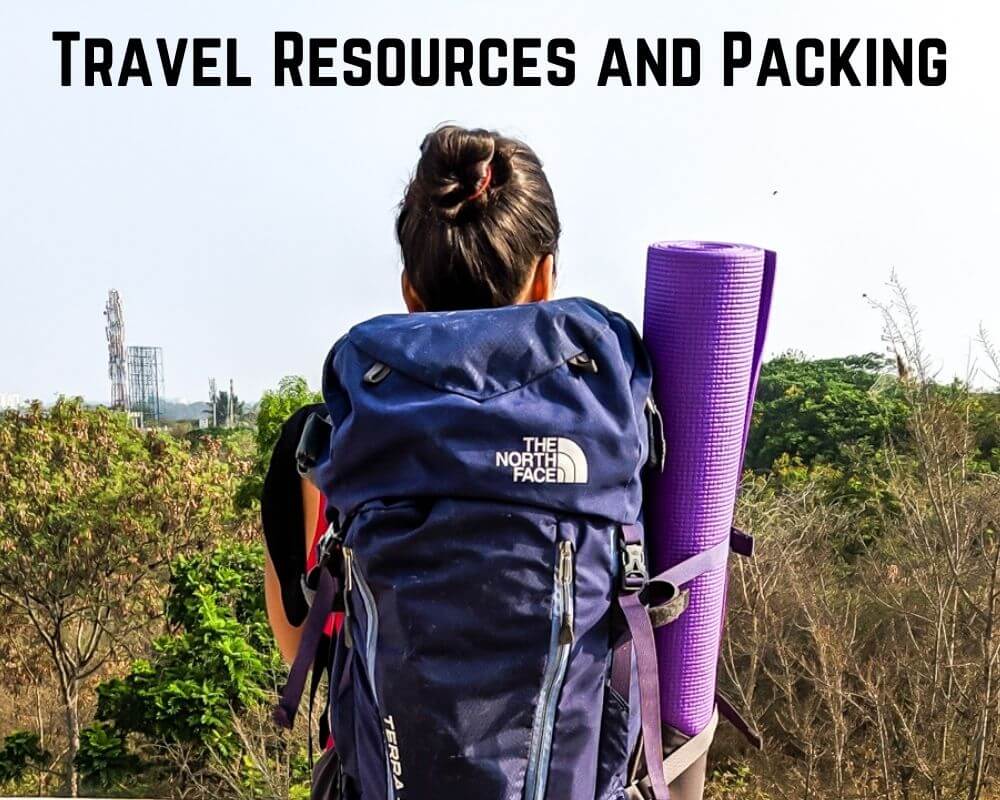
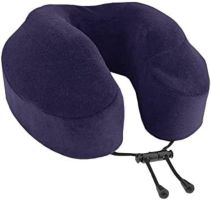
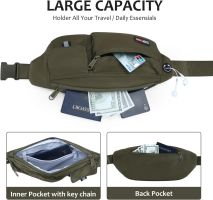
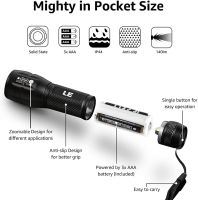
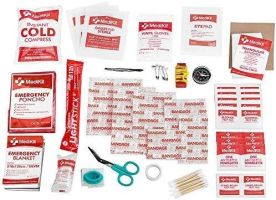
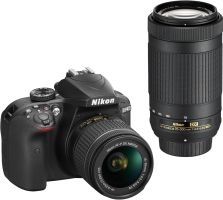
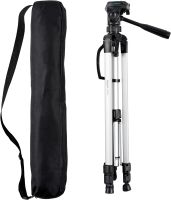
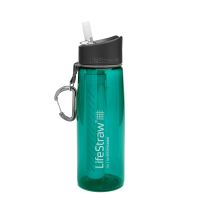
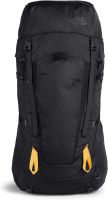
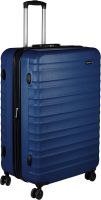
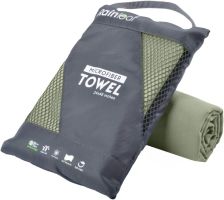
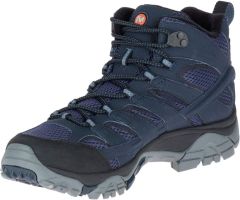
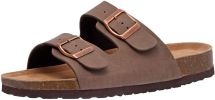
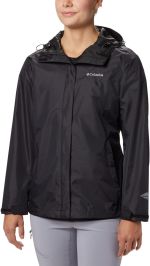

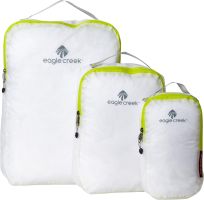
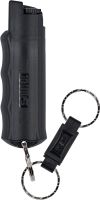
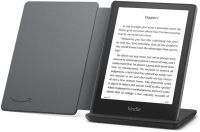

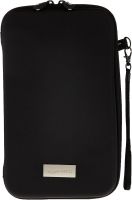
This blog is a treasure trove of travel knowledge, and I’ve learned so much from it!
Aww. Thank you so much. I’m glad my blog was helpful:)
Excellent useful page! New to your site; excellent work!
Fantastic resource page! Just found your site, great job!